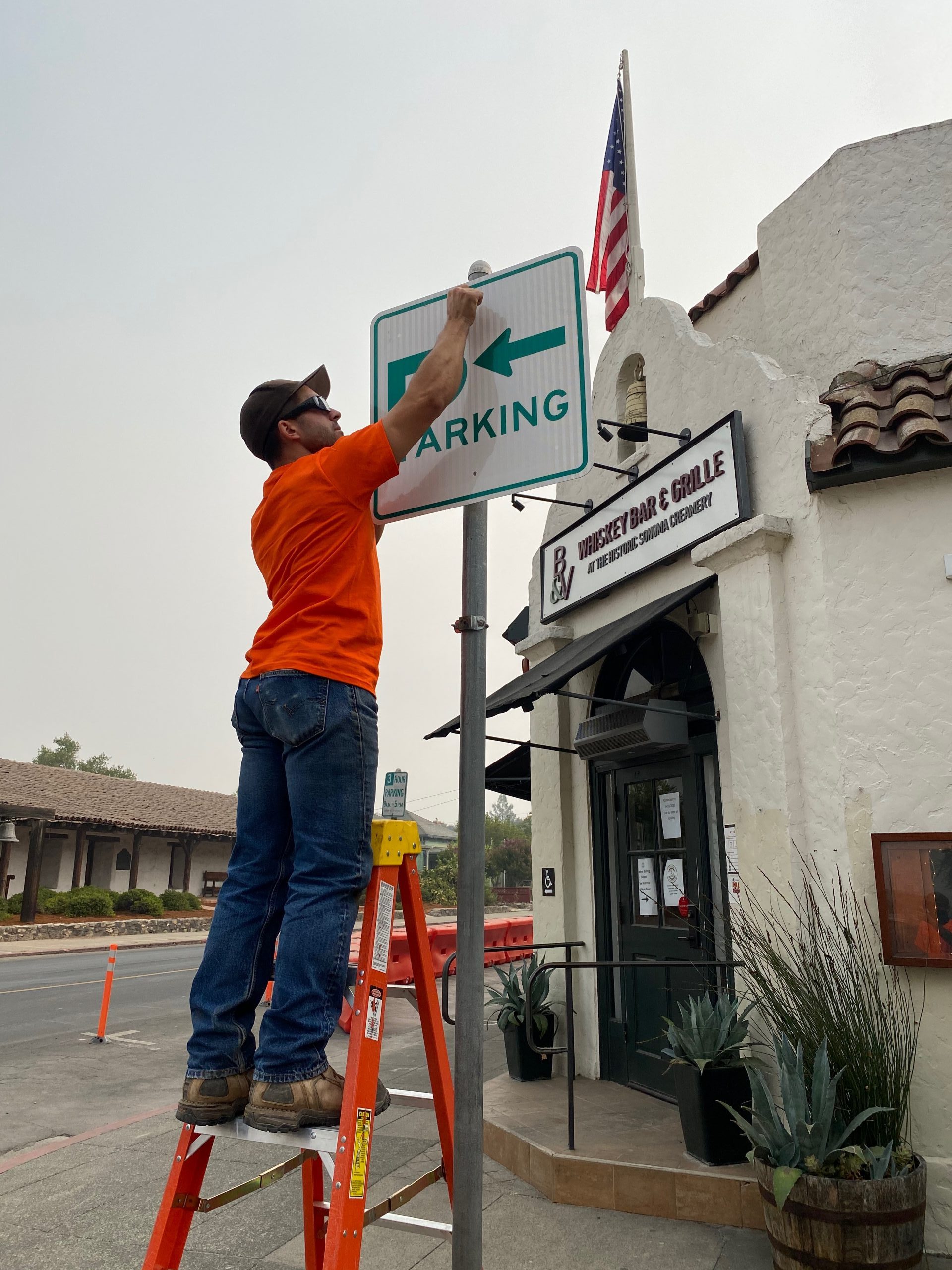Downtown Parking Management Plan
Summary and Current Status
City Council has directed the preparation of a comprehensive, long-term parking strategy/management plan for Downtown Sonoma. To accomplish this, the City contracted with W-Trans, a local traffic engineering firm, to create a Downtown Parking Management Plan (Plan) that outlines a strategy to address parking challenges in Downtown Sonoma.
The City’s planning department released a Public Draft Downtown Parking Management Plan for a 30-day public review that closed at 5:00 pm on November 16th. The Plan was considered by the City's Planning Commission at their meeting on November 17, 2022, (watch a recording) and continued the item to their December 15th meeting. The Draft Plan was amended in response to public comment.
Next Steps
City Council will consider the Draft Downtown Parking Management Plan at their meeting on September 18th, 2023.
Find more information about the Draft Plan, FAQs, updates, documents below.
Please Please note that large documents might not be able to be previewed, but can be viewed by clicking the "download" link.
Questions?
Contact the Planning Department: Call (707) 938-3681 or Email

Draft Downtown Parking Management Plan
The Draft Downtown Parking Management Plan (Plan) summarizes the most recent parking inventory, supply, and demand study, including counts of the public on- and off-street parking supply. The Plan identifies specific parking strategies, which represent a toolbox of measures available to the City. To prioritize their application, they are broken into two phases.
PHASE 1 - The strategies in the first phase are recommended because of their relative ease of implementation. These strategies require comparatively little management and may by themselves result in an acceptable parking system for the City. Phase 1 strategies include:
- Enhanced parking enforcement through technological improvements.
- Work with the State of California to develop a mutually beneficial agreement in which the parking supply of the Casa Grande lot is increased.
- Incorporate new wayfinding signage if shared lots become available and consider real-time technology for the Casa Grande lot if an agreement is reached with the State.
- Introduce passenger loading zones downtown.
- Identify shared parking opportunities with private downtown lot owners.
- Evaluate revising on-street parking time restrictions so they are in effect seven days a week from 8 am to 8 pm and evaluate no parking zones.
- Offer more public bicycle parking in convenient downtown locations and evaluate the bicycle parking provisions of the Municipal Code.
- Expand the use of bicycle valet parking during special events.
- Improve the City’s quality and distribution of mobility information, resources, and incentives.
- Conduct a study to determine if there is sufficient demand and funding available for a downtown circulator.
PHASE 2 – Phase 2 Strategies (If needed based on evaluation of Phase 1 Strategy Implementation)
- Institute a Parking Benefit District to manage Downtown parking and transportation improvements.
- Implement on-street metered parking and regulate based on demand.
- Create a Resident Parking Meter permit program to prioritize resident needs in the Downtown core.
- Allow for the creation of Residential Parking Permit programs to address potential spillover issues in nearby neighborhoods.
- Create an Employee Parking Permit program and designate certain off-street parking spaces in the Downtown for employees.

